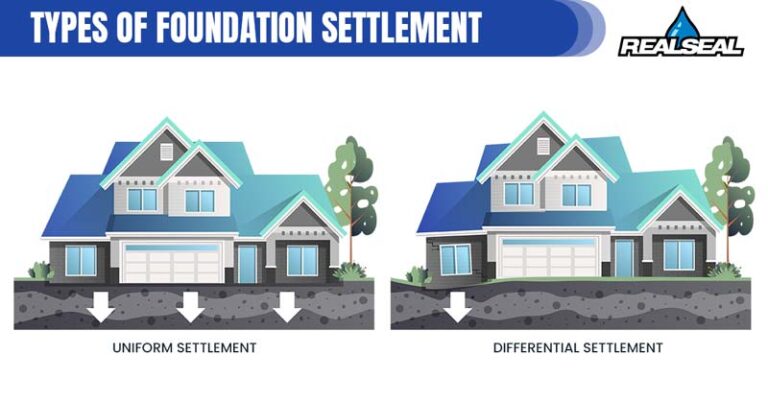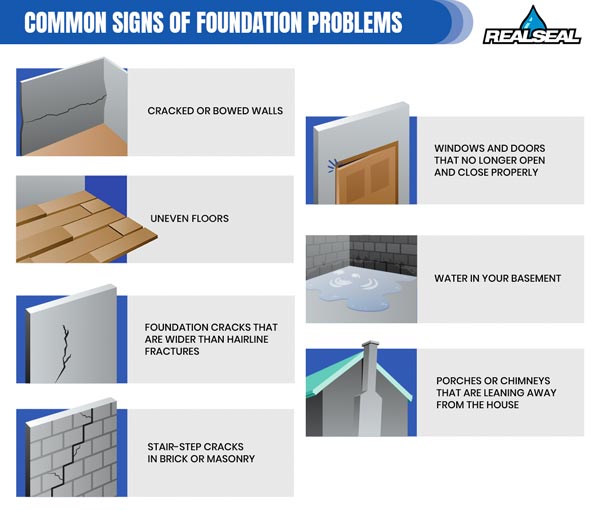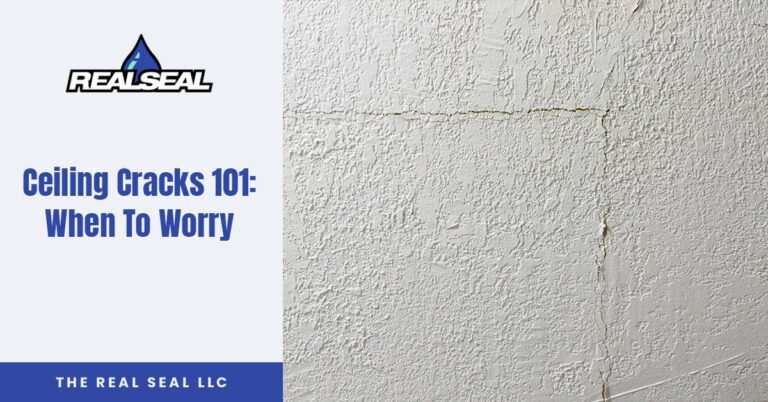The good news is ceiling cracks don’t necessarily indicate structural damage. Many times, they’re caused by paint or plaster buildup over the years. However, a ceiling crack could be a sign of a serious foundation issue. It depends on the size, type, and location of the crack.
This article will provide you with helpful information on the different types of ceiling cracks, their causes, when to worry about a ceiling crack, repair options, and more.
So, Do You Need To Worry About A Ceiling Crack?
Not necessarily. Some ceiling cracks are caused by natural settlement in older structures, or paint or plaster buildup. While they may look unsightly, these types of ceiling cracks usually aren’t anything to worry about. However, sometimes a ceiling crack can be a sign there’s a serious issue with your home’s foundation.
Ceiling Cracks: Causes and Solutions
Ceiling cracks are a common issue homeowners may face at some point. While some ceiling cracks may be harmless, others may indicate a problem with your home’s foundation. Here’s what you need to know about ceiling cracks:
Causes of Ceiling Cracks
There are various causes of ceiling cracks, including the following:
- Structural Damage – One of the leading causes of ceiling cracks is structural damage. This can be caused by various factors, including differential foundation settlement, or when a building’s foundation is settling unevenly into the ground. See the infographic below for an illustration of the difference between uniform and differential settlement.
- Natural Settlement – As a building ages, it’s natural for it to settle a little bit into the ground. This slight settlement can cause cracks not only in the ceiling but also in the walls and floors.
- Moisture Damage – Ceiling cracks can also occur due to moisture damage. Leaky roofs or plumbing issues can cause this.
- Heavy Load on Ceiling – Another cause of ceiling cracks is the weight of items on the floor above the ceiling. This might be something like a heavy bathtub.
- Poorly Installed Drywall – Drywall that hasn’t been properly installed is also a common cause of ceiling cracks. This can happen when drywall joints weren’t properly taped.

Repair Solutions For Ceiling Cracks
The correct repair solution for a ceiling crack depends on the cause of the crack. If the cracks are minor and don’t indicate structural damage, they can be repaired with simple DIY techniques such as painting over them or filling them with putty.
On the other hand, if the crack was caused by a foundation problem, it’s essential to call a foundation repair contractor to assess the situation. The contractor may suggest underpinning the foundation by installing push or helical piers. After the piers are in place, a synchronized hydraulic lifting system raises the house to maximum practical level. Underpinning stabilizes the foundation by extending its depth to the load-bearing strata or bedrock. Any cracks caused by differential settlement will typically close up after underpinning, although small cracks might remain in some cases.
For more information about underpinning, see Underpinning: The Foundation Solution That Works.
Types Of Ceiling Cracks
As we’ve mentioned above, some ceiling cracks are just ugly and aren’t a cause for concern. We could say that these ceiling cracks are normal. Unfortunately, not all ceiling cracks fall into this category.
Normal cracks
Thin, spiderweb cracks on the ceiling plaster or paint are usually nothing to worry about. They may occur due to seasonal temperature changes that cause minimal building movement.
Serious cracks
- A large-ish crack that runs across the ceiling and down the wall is a strong indication of structural damage. If you see one of these, contact a foundation repair professional immediately.
- Ceiling cracks accompanied by sagging also require immediate attention.
- While one small ceiling crack usually isn’t anything to worry about, multiple small ceiling cracks in the same area indicate more than normal movement and should be evaluated.
When To Worry About Ceiling Cracks
If you see any of the following, it’s time to worry because as we’ve just noted above, these are serious ceiling cracks:
- A single, continuous crack across the ceiling and down a wall
- A ceiling that’s both cracked and sagging
- Many small ceiling cracks
Any gaps between the wall and the ceiling should also be inspected by a foundation repair contractor because this is a common sign of differential settlement.
If you see any suspicious ceiling cracks, look around for other signs of structural damage:
- Uneven floors that sag or slope
- Doors and windows that stick
- Cracks in flooring that go all the way across the floor
- Cracked or bowed walls
- Cracked or out-of-place moldings
- Stair step cracks in brickwork or masonry
- Walls that are separating from the ceiling or floor
- Porches or chimneys that have separated from the house
- Water in the basement caused by cracks in the foundation wall

Don’t take ceiling cracks lightly. If you see a ceiling crack in your Chicagoland home, contact The Real Seal today to schedule a free foundation evaluation. If we find a problem, we’ll give you a repair estimate.







12 Responses
Happy New Year!
I am a renter but I think there is a problem with my ceiling. My landlord is aware of it but has done nothing to resolve the issue. I’m a single parent with a 3 yr old. I need to know if a specific Crack in my ceiling that seems to be spread is a situation where our safety is being compromised. Does you company give free estimates? The floor slants, and the bathroom door doesn’t close properly as well.
Hi Johanna,
We do provide free estimates, but it has to be through the homeowner, unfortunately. We cannot force anyone to make repairs on their home. The best thing to do would to find a better home to rent, as landlords will often ignore these kind of issues until they are too far beyond repair, especially when all they are interested in is the “rental income” off their extra house. This country’s rental market is causing the deterioration of many homes. These new landlords looking to make extra money off rental income mainly care about collecting rent, and see any necessary repairs as “expenses that come off their bottom line.” It really is a shame what the housing market has become.
This website was great information.
It helped me diagnose the source of the large ceiling plaster cracks in two rooms of the house we got to refurbish and sell. Previous owner was a comic book collector and the two rooms above where the cracks are were his storage rooms completely packed floor to ceiling. Major overweighting.
My question is how to determine if the overweighting has structurally damaged the floors ? The floors are solid with absolutely no noticeably sagging or weak points.
There are no cracks in any of the walls and the large plaster cracks in the ceiling are exactly at the locations where the majority of the comic book boxes were stacked up. Cracks are deep and go straight across room. The ceiling that is the worst has a second large crack that is perpendicular and where the two cracks intersect is almost directly below where most of the weight was on the floor above.
Basically is it possible that it is just the plaster ceiling that needs to be repaired since floors above are solid, with no sagging and we know the origin is overweighting on the floor above?
I live in a different state so scheduling an appt to look at it isn’t an option.
Thank you
Hi Bonnie!
Thank you! We’re always happy to help educate.
If you want to know if the floors were damaged, you’ll have to open up the ceiling. You can call an Engineer out to evaluate the joists/sub floor above. They will be looking for cracks/deterioration in the floor joists. It is likely the excess weight just bowed the joists down, causing the plaster to crack.
It is possible the plaster just needs to be repaired, but if you want to be safe, open the ceiling and have someone look at it.
Thank you for the quick response. We plan to replace the ceiling plaster so once we demo it we’ll take your advice and get it inspected before replace plaster.
Sounds good, happy to help!
Hi
We have an on going problem with our flat roof in our extention. For the last three years almost, we have had spots here n there that indicate leaking. Now we have noticed a hairline cracking along one side of the skylight from a corner. It has rained hard, and on waking this morning it is dripping from along that point. It has snowed to, some is still on the flat roof. We are having a new roof put on as soon as the weather permits. However, I’m worried what’s caused the crack in the first place. Roof n skylight is three years old now. The roof is resin fibreglass kind. Any help in this would be so helpful. Ie should we be doing anything about the crack or mend the roof and paint over etc n move on? Thanks in advance
Hi Lyn,
Unfortunately, we are not roofers. We do believe that all cracks should be repaired and fixed, however. For those flat roof cracks, we suggest finding a reputable roofing contractor to help you fix it.
I see a crack in each corner of the high ceiling in my family room. We just painted and remodeled early in the spring. No wall cracks or nothing like that it looks like just the paint cracking. What do you suggest?
It is best to get an evaluation done to be sure. It may just be temperature change, but the earlier you catch an issue, the cheaper it will be to fix!
This blog provides a helpful guide on ceiling cracks, explaining when they’re normal and when they might indicate a bigger issue.
That it does!